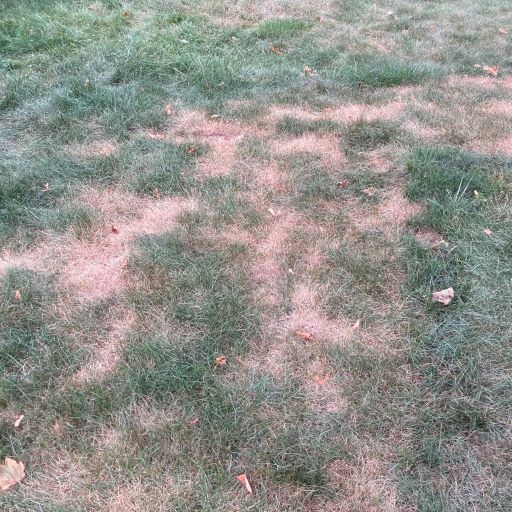
Hi there,
Back in April, we installed new sod in our front yard. A few weeks ago, the area where the new sod was installed started getting dry patches. The area where the old grass stayed does not have these patches. Since we tend to water our lawn well, we suspect that this may be some sort of infestation. Would anyone have any clues about the culprit and suggest a solution to tackle these patches?
thank you in advance for your help.
Milan
Thank you for contacting the Toronto Master Gardeners with your question regarding dry, brown patches in your new sod. There are a variety of factors that may be at play with this issue. The lawn care you are providing is clearly effective for your established grass that is thriving, however new sod is more susceptible to problems. Consider why you re-sodded this area. Was there pre-existing lawn and were there problems? What was the soil condition like? Do dogs urinate in this area? Examine your grass closely. Can you see discolouration or spots on individual grass blades or evidence of insects or grubs? Dig up a patch of grass and have a closer look. The Halton Region Master Gardeners has a helpful guide to diagnosing lawn issues that outlines a systematic approach Lawn Issues.
This summer, Toronto has been hot and humid with little rainfall. Under these conditions, grass can become dormant, and weeds, pests and diseases are more likely. If your lawn has gone dormant due the hot conditions it should rebound in a couple of weeks as temperatures cool. However, the patchy pattern of discolouration may indicate some sort of pest. The Ontario Ministry of Agriculture, Farming and Rural Affairs (OMAFRA) publishes a guide aimed at professional turf management, but with great photos of a variety of pests and diseases that may help you narrow down the issue OMAFRA IPM for Turf. OMAFRA’s shorter Lawn Maintenance Fact Sheet also has photos and links to common insect pests such as grubs and Chinch bugs OMAFRA Lawn Maintenance.
Cultural practices that promote a healthy lawn are the best defence against weeds, pests and disease. For example, watering too much can cause soggy soil that suffocates new roots, and watering too little impedes root development. Ideal water application is deep and infrequent – 2-4 cm / week. Apply this amount in 1-2 waterings each week, not daily small amounts. Watering in the morning allows grass blades to dry off while water is absorbed into the soil, decreasing the chance of leaf disease. Keep your lawn mower blade sharp and set high – 3″ is ideal. Longer grass shades out weeds and retains soil moisture better. Leave grass clippings on the lawn where they can break down and return nutrients to the soil. Be careful with fertilizer and herbicide applications, both of which can damage lawns if used incorrectly. Landscape Ontario has a good reference for lawn care throughout the growing season Landscape Ontario Lawn Maintenance. You may want to consider over-seeding the browned areas. September is a good time to do this. Choose a seed or seed mixture that is suitable for your conditions (sun or shade) and either mix with top soil or add a fine layer of top soil over the seed (<1/2 inch). Keep new seed moist but not soggy and avoid foot traffic or other compacting forces to newly seeded areas.
One final thought is to consider other options to a grass lawn. The Toronto Master Gardeners has a Garden Guide outlining broadleaf, evergreen ground covers which can be used as a lawn replacement TMG Evergreen Groundcovers. Similarly, the City of Guelph provides an extensive list of plants that can be considered as alternatives to grass depending on the conditions and use of the area City of Guelph.
We wish you the best of luck with your lawn. Please don’t hesitate to contact us again with further questions.
2022-09-15

